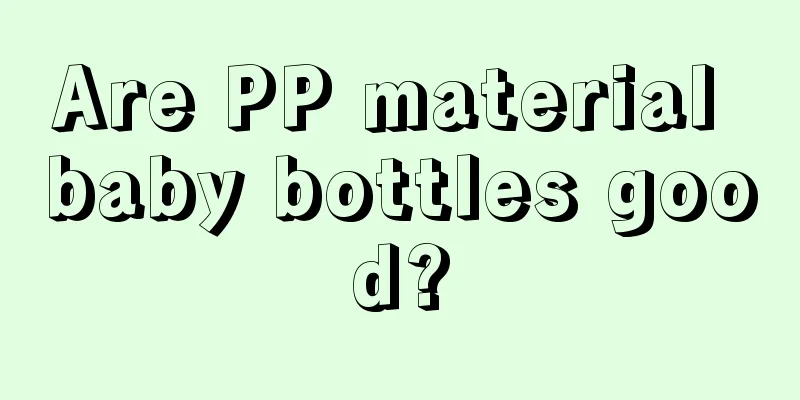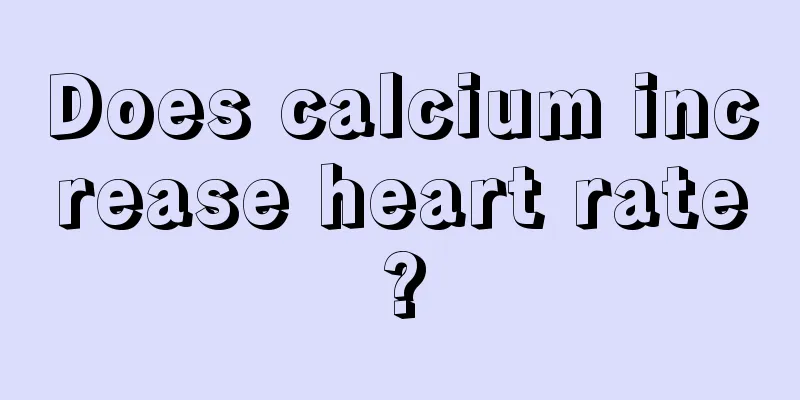Are PP material baby bottles good?

|
For new parents, caring for a baby is one of the most anxious issues. Babies are in a very special period. Their organs are not well developed, and they lack the ability to resist external dangers. They are prone to bacterial infections and related diseases. Therefore, parents need to pay special attention to their baby's food, clothing and daily necessities. Recently, pp milk bottles have been welcomed by many mothers. What are the advantages of this kind of milk bottle? 1. What is a PP baby bottle? Refers to a baby bottle made of PP material. PP baby bottles are often known for their safety, lightness, and drop resistance. Among them, PP is highly praised by mothers because it does not contain bisphenol A, a carcinogen. Therefore, polypropylene (PP) is often used in the manufacture of food containers, baby bottles, etc. 2. How about PP baby bottles PP is a material with the characteristics of high temperature resistance, corrosion resistance, good surface finish and drop resistance. In addition, the material has good thermal stability, which ensures that the PP bottle can maintain its own safety even at a high temperature of 110 degrees Celsius. The most noteworthy thing is the safety of PP baby bottles. Since they do not contain carcinogens, are non-toxic and harmless, and are very cheap and cost-effective, they are worth buying for mothers. Mothers should also pay attention when purchasing: compared with PC bottles, PP bottles are more beautiful, have better hardness and are more wear-resistant. On the other hand, once a PP baby bottle breaks, it must be replaced. 3. Classification of PP baby bottles PP baby bottles have many advantages. First, the translucent bottle body allows mothers to clearly understand how much milk powder is in the bottle when pouring it. Secondly, its good heat resistance ensures that it can withstand high temperatures of 110 degrees Celsius. Thirdly, PP bottles are very easy to rinse, saving mothers a lot of worry. So how are PP baby bottles classified? 1. Classification by function Under this classification, baby bottles can be divided into regular and anti-spit-up types. PP anti-spit-up bottle means that it can effectively prevent or reduce the baby's inhalation of air when sucking milk, thereby effectively preventing the baby from experiencing bloating, burping or spitting up milk after drinking milk. 2. Classification by capacity The simplest way to classify baby bottles is by capacity. The more common classifications are 120 ml, 150 ml, 220 ml, and 240 ml. Generally speaking, mothers can consider buying two bottles, one large and one small, one for the baby to drink milk and one for the baby to drink water. 3. Classification by caliber There are wide-mouth and standard-mouth types. At present, the former is highly praised by mothers because its wider mouth makes it convenient to pour in milk powder and is easy to clean. 4. Classification by configuration Babies are classified by whether they are equipped with a handle and a straw. For babies aged 0 to 6 months, it is recommended that they use PP bottles without handles and straws, while babies over six months old can choose bottles with handles and straws, which they can hold by themselves. In addition, with the help of the automatic straw, the baby can easily suck milk at any angle. 4. How often should PP baby bottles be changed? For mothers, the safety of the baby is the most important thing, and PP bottles are chosen by many mothers because of their high safety. Generally speaking, the safety of baby bottles can be ensured through daily cleaning of the bottles. However, as time goes by, once the shelf life is exceeded, ordinary cleaning can no longer ensure safety, and it needs to be replaced. 5. Any bottle needs to be changed frequently No matter what kind of bottle it is, after a period of use, the bottle needs to be replaced: 1. Due to long-term scrubbing, the surface of the bottle will be oxidized and the scale on the surface of the bottle will be worn out and cannot be seen clearly. 2. Long-term use will also cause a lot of milk stains to accumulate on the inner wall of the bottle, or cause the inner wall to be covered with a layer of fog. To sum up, it is generally recommended to change the bottle every six months. Once there is a crack, it needs to be replaced immediately. In addition, although PP bottles have good resistance to falling, they are not wear-resistant. Therefore, as long as cracks appear in the PP bottles, mothers must change the bottles for their babies for safety reasons. |
<<: How to maintain the relationship between husband and wife
Recommend
Precursors and symptoms of stomach cancer and lung cancer
Gastric cancer can cause damage to the digestive ...
What is the best way to remove formaldehyde with onions?
Onion is a vegetable with relatively high nutriti...
Which is better, a foundation brush or a beauty egg
In our daily life, we often find beauty eggs and ...
What's the matter with blowing air when sleeping at night
People go to sleep every night to rest their brai...
How long does it usually take to conceive and implant after having sex
Many couples who want to get pregnant and have ch...
What should you pay attention to in your diet when treating ear inflammation
There are many reasons for ear inflammation, and ...
What is the fastest and most effective way to get rid of sun spots?
The sun is stronger in summer and winter, and peo...
What is the cause of dry seborrheic dermatitis on the scalp?
The occurrence of dry seborrheic dermatitis on th...
What is stomach fire and how is it caused
Stomach fire is actually a term used in tradition...
Bone hyperplasia on big toe
The disease of bone hyperplasia can occur in any ...
What should we do to prevent small cell lung cancer
With the worsening of air pollution, the incidenc...
Can chemotherapy cure stomach cancer
For patients with gastric cancer, active treatmen...
Does the patch massager have any side effects?
Nowadays, more and more people are in sub-health ...
What are the different symptoms of liver cancer patients? Introduction to four symptoms of liver cancer
1. Many patients will experience varying degrees ...
Drinking unboiled water can easily lead to bladder cancer. What are the dietary taboos for bladder cancer?
Speaking of bladder cancer, I think many people s...









